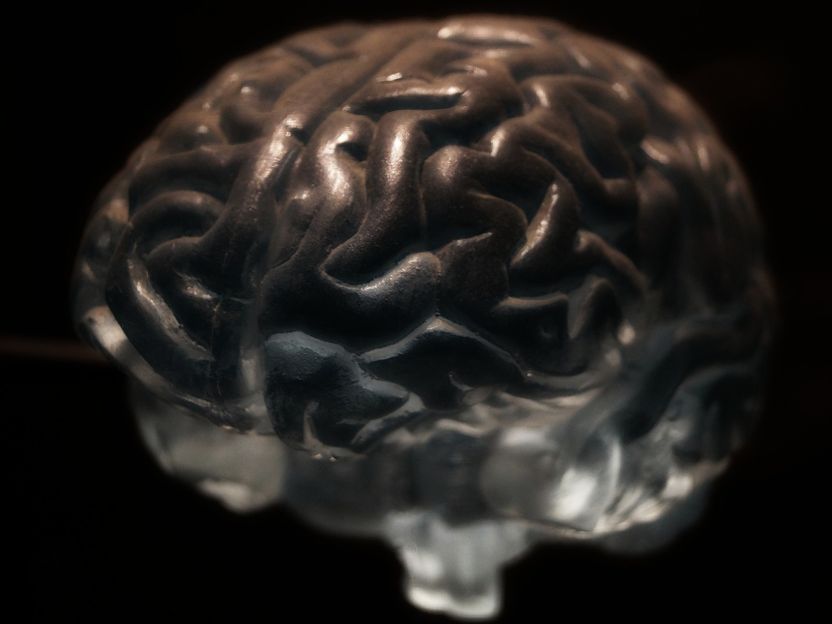How ApoE4 endangers the brain
A potential new approach to Alzheimer’s therapeutics?
Apolipoprotein E4 is considered the most important genetic risk factor for Alzheimer’s disease. A group of researchers, led by MDC scientist Thomas Willnow, has now discovered how ApoE4 can damage the brain.

Symbolic image
4571526, pixabay.com, CC0
Apolipoprotein E (ApoE) is kind of like a delivery service for the human brain. It supplies neurons with important nutrients, including with polyunsaturated fatty acids – which are building blocks of the membranes surrounding the neurons. In addition, certain unsaturated fatty acids are converted into so-called endocannabinoids. These are endogenous signaling molecules that regulate numerous functions of the nervous system, such as memory but also the control of immune response, thereby protecting the brain from inflammation.
The ApoE cargo reaches the neurons via a membrane receptor called sortilin. In a process known as endocytosis, sortilin binds ApoE and transports it into the interior of the neuron through invaginations of the cell membrane. The interaction of ApoE and sortilin has a major impact on our brain health: If not enough polyunsaturated fatty acids reach our gray cells, they begin to waste away and become susceptible to inflammatory responses.
But not all ApoE is the same. There are three gene variants in humans: ApoE2, ApoE3 and ApoE4. They do not differ in their function of transporting lipids. The ability to bind to sortilin is also the same in all variants. However, people who carry the E4 variant have a twelve times greater risk of developing Alzheimer’s than those with the E3 form. About 15 percent of people carry ApoE4. “Why ApoE4 significantly increases the risk of Alzheimer’s is one of the central questions in Alzheimer’s research,” says Professor Thomas Willnow, who for many years has been studying the development of neurodegenerative diseases at the Max Delbrück Center for Molecular Medicine in the Helmholtz Association (MDC). Willnow is also affiliated with Charité – Universitätsmedizin Berlin and Aarhus University.
ApoE4 prevents the recycling of sortilin
A study by Willnow’s lab has now provided a possible explanation for why ApoE4 poses such a danger to the brain. The lead author of the study, which was recently published in the journal Alzheimer’s & Dementia, is Dr. Antonino Asaro from the MDC. The study found that in the E3 variant, endocytosis functions smoothly: Sortilin binds the lipid-loaded ApoE3. After depositing its cargo inside the neurons, sortilin returns to the cell surface to bind new ApoE. This process repeats itself many times per hour, thus supplying neurons with sufficient amounts of essential fatty acids.
It comes to a standstill, however, when ApoE4 is involved. If sortilin binds ApoE4 and transports it into the neuron’s interior, the receptor clumps up inside the cell. It is unable to return to the cell surface, and the endocytosis process grinds to a halt. Eventually, fewer and fewer fatty acids are taken up, the gray cells cannot protect themselves and become inflamed. As a result, they are susceptible to cell death as the aging process sets in – and eventually die. The risk of developing Alzheimer’s dementia thus increases dramatically.
“We used a custom mouse model to simulate the human lipid metabolism,” Willnow explains. His team achieved this by breeding transgenic mice that produce human ApoE variants, either ApoE3 or ApoE4. The researchers then studied the lipid composition of the mice brains using mass spectrometry, a technique for analyzing atoms and molecules. They found that the lipid composition was healthy in the brain of mice with ApoE3 with adequate levels of unsaturated fatty acids and endocannabinoids. In contrast, the brain cells of the E4 mice did not receive enough lipids. Under the microscope, the researchers saw that in the ApoE4 mice the membrane vesicles that normally bring sortilin from the cell interior back to the cell surface had gotten stuck inside the neuron – a sign that ApoE4 had caused the receptor to clump up.
A potential new approach to Alzheimer’s therapeutics
“This finding may provide the basis for a new strategy to treat Alzheimer’s,” Willnow says. People with the E4 variant could be treated with an agent that prevents ApoE4 from causing the receptor sortilin to clump up. Such agents are already being tested in neuron cultures.
Willnow’s lab at the MDC, in collaboration with the Neuroscience Research Campus at Aarhus University in Denmark, is now working to develop such a therapeutic. The Novo Nordisk Foundation is supporting the research with a €7 million grant. “If we succeed in developing such a drug, screening for ApoE4 might make sense,” the cell biologist says. Preventive measures could then be taken against the inflammatory damage of gray cells in people with a genetic risk. “But until then I’d rather not know what ApoE variant I have.”



















































